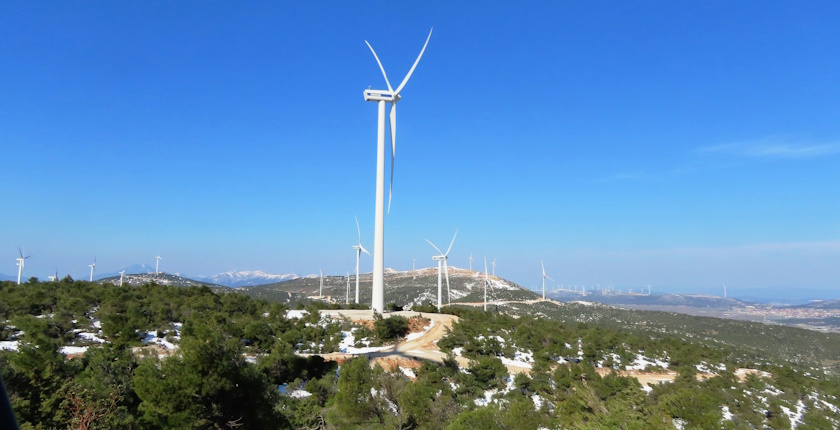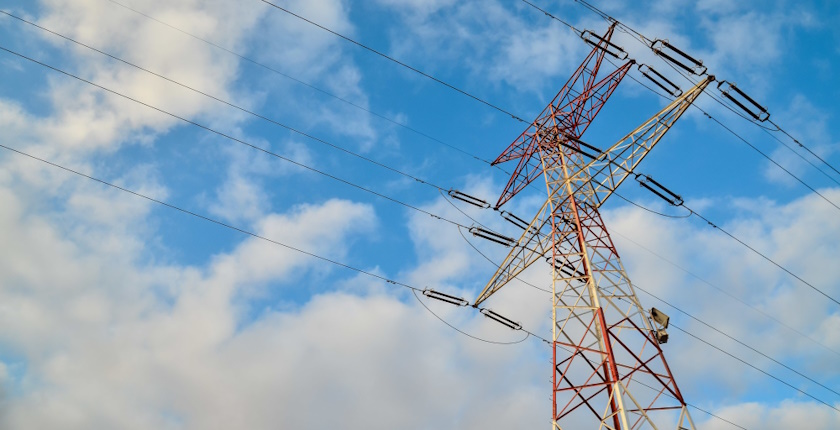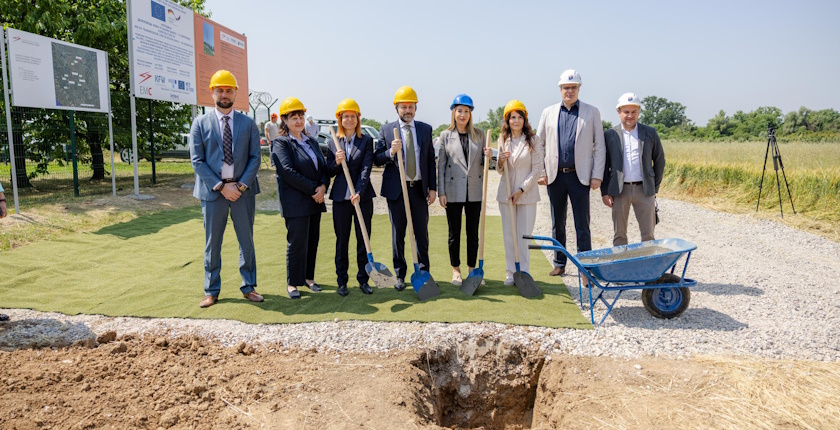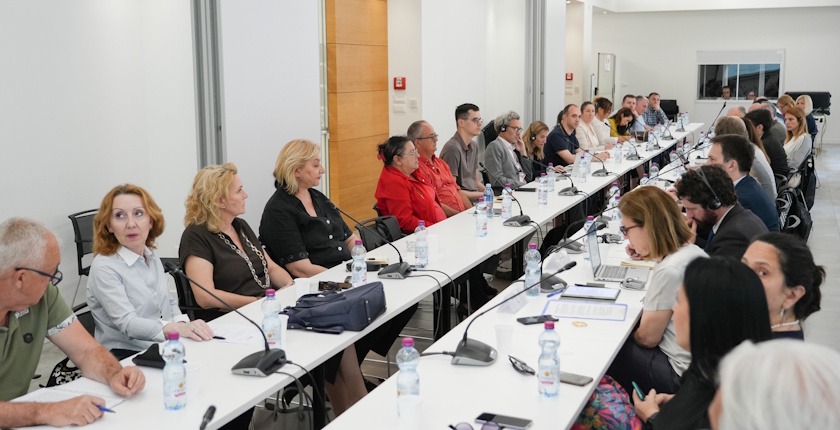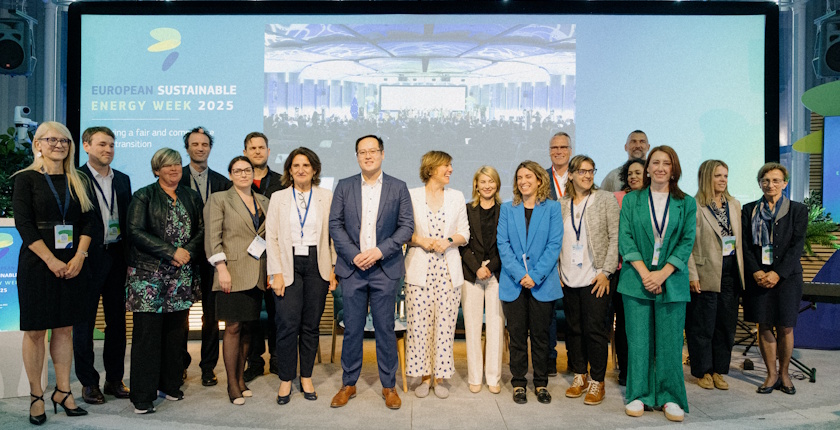
Winners of EUSEW Awards announced
Stella Tsani is this year’s winner of the EUSEW Woman in Energy Award. The Innovation Award went to the Dutch company AquaBattery, while the initiative Community Energy for Social Housing in Otterbeek won in the Local Energy Action category.
EUSEW Awards honor outstanding individuals and projects for their innovation and efforts in energy efficiency and renewable energy. After a high-level jury selected nine finalists, the winners were chosen through online public voting in three categories: Innovation, Local Energy Action, and Woman in Energy.
The award ceremony took place on the first day of the European Sustainable Energy Week (EUSEW) in Brussels. This year’s winners are Stella Tsani, AquaBattery, and Community Energy for Social Housing in Otterbeek.
EUSEW, the largest event in Europe dedicated to sustainable energy, was opened by European Commissioner for Energy and Housing Dan Jørgensen. In his speech, he stressed the European Union would need to become fully independent from Russian energy. “The way we will do it is by banning the import of gas. By the end of this year, we plan to ban spot market gas purchases, and by the end of 2027, we will also ban long-term contracts,” he stated.
The European Union imports fossil fuels worth EUR 400 billion annually, which, according to Jørgensen, is neither economically nor environmentally sustainable.
“Instead of constantly buying expensive energy, we must start producing our own sustainable and renewable energy,” he stressed.
Climate change is here and now
Jørgensen noted that in addition to the energy crisis, Europe is now facing a climate crisis.
“Climate change is here. It’s not something that might happen in the future. It’s not something that we fear could be a prospect. It’s here and now”, he emphasized, adding that Europe has a moral responsibility to combat climate change because, historically, the West, including Europe, has polluted for more than a hundred years.
The third crisis Europe faces, according to the commissioner, is a competitiveness crisis. He pointed out that energy in Europe is two to three times more expensive than in the United States or China, and that last year, 47 million Europeans were unable to adequately heat their homes.
“To address these three challenges, security, climate change, and competitiveness, we need to stay on track. The green transition is not the reason for these problems. The green transition is the answer for these challenges”, Jørgensen concluded.
Energy produced in Europe is always better and more competitive than imported energy
Poland’s Secretary of State at the Ministry of Climate and Environment, Krzysztof Bolesta, also spoke at the opening. He highlighted three key elements for a successful energy transition: affordable energy, fairness, and sustainable energy independence.
Bolesta stressed that citizens must feel tangible benefits from the energy transition through more affordable energy. He also underlined the importance of a just transition, particularly for workers in hard-to-decarbonize industries.
According to him, energy produced in Europe is always better and more competitive than imported energy. “We don’t want to swap one dependency on Russian oil, say, with tech import dependency from Asia. So let’s not swap oil for batteries. Let’s try to bring as much of the value chain to Europe as possible,” the Polish official said.
Woman in Energy – Stella Tsani
Stella Tsani, a scientist and associate professor at the University of Athens, is this year’s winner of the EUSEW Woman in Energy Award. She combines scientific research in energy transition with active participation in high-level policymaking, contributing to practical progress through evidence-based recommendations.
Through work with organisations such as the United Nations Environment Programme (UNEP) and the Intergovernmental Panel on Climate Change (IPCC), her research informs policies that balance economic growth with environmental protection. She is also dedicated to empowering young women in the energy sector through mentorship and education, believing that future female leaders are key to achieving the EU’s climate goals.
In her speech at the award ceremony, Tsani highlighted her belief in the vast, untapped potential of youth. “That’s what I’m trying to do at the University of Athens – support all future leaders, the future changemakers. So I truly believe in you and I urge everyone in this room, the European Commission, to support young people,” she stated.
Innovation category – AquaBattery
The Innovation Award recognises outstanding projects funded by the European Union that are ongoing or recently completed, demonstrating original and innovative approaches to the energy transition and delivering tangible results.
This year’s winner is AquaBattery from the Netherlands. Its pilot project in Delft could soon commercialize a sustainable and affordable solution for long-duration energy storage based on kitchen salt and water. The unique innovation, using widely available and environmentally friendly materials, could help Europe reduce its reliance on critical raw materials and develop better energy storage solutions.
Local Energy Action – Community Energy for Social Housing in Otterbeek
The Local Energy Action category highlights citizen or consumer-led initiatives at the local level that contribute to the energy transition in their communities. Such initiatives are meant to inspire others across the EU by demonstrating both economic and environmental benefits.
This year’s winner is Community Energy for Social Housing in Otterbeek, based in the city of Mechelen, Belgium. The project provides socially vulnerable tenants with access to renewable energy. Two hundred households in the Otterbeek social housing district have been equipped with solar panels, receiving green energy at a fixed rate below market prices.
Supported by the EU under the TANDEMS project, the initiative has developed a EUR 1 million investment model funded through citizen contributions, showcasing the power of community-driven change.
“By demonstrating how social inclusion can accelerate the clean energy transition, we advocate policies that support energy sharing, community-driven renewable projects, and affordable access to clean energy for low-income households,” says Bart De Bruyne, Energy Sharing Expert at the City of Mechelen.

